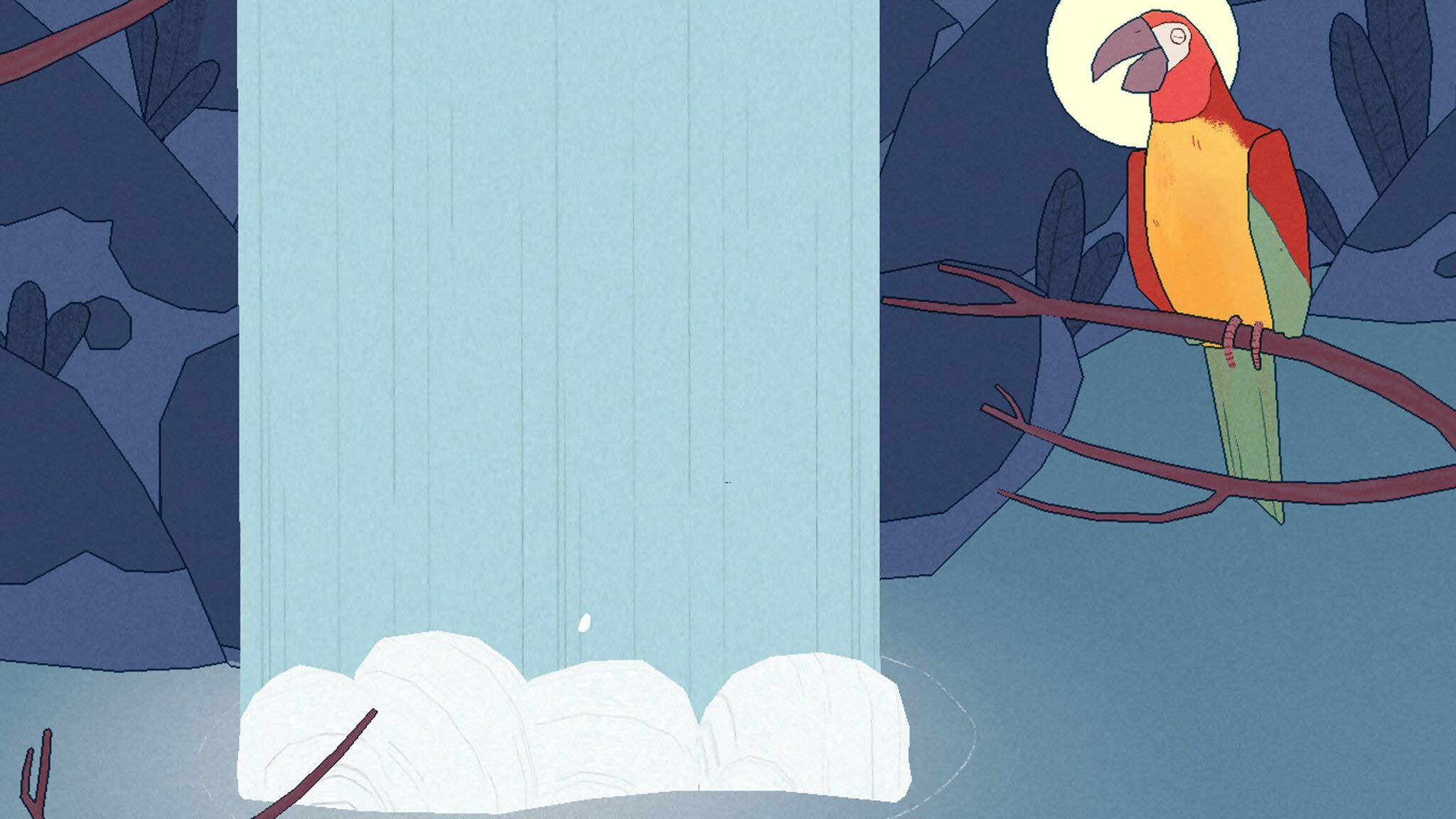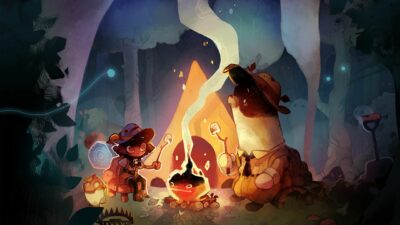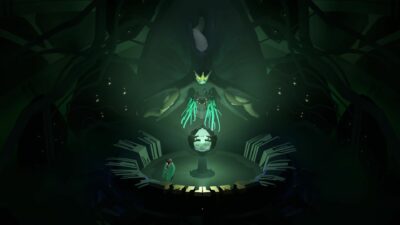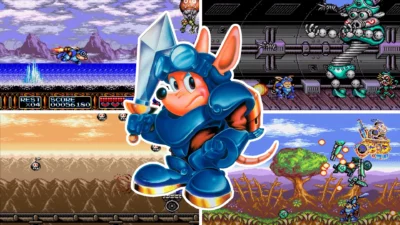
At some point, just about every gamer has an idea for a video game, and will daydream about making it – an original idea conceived, created, and successfully brought to the market by a single mind.
Of course, few do it, for various reasons: time, work commitments, and the general messiness of everyday life. But there are a growing number of dedicated coders who’ve managed to pull it off, weaving their development work around their full-time jobs and family lives.
But what’s this lifestyle like? What are the sacrifices that need to be made, and ultimately, is it worth it? To find out, we spoke to three solo developers from around the world, each at different stages of the game-making process: one at the start of their journey, one deep in the nuts and bolts of creating the game, and one about to step into the murky world of promoting and marketing their precious pet project.
Starting Out
Kerry Turner is a developer based in Brighton, England. She’s been involved in the industry for over a decade, focusing largely on mobile games, and her day job involves leading a team of support engineers at Unity.
Showing just how varied the modern gaming market can be, Turner’s as-yet-untitled creation can only loosely be described as a ‘game’, taking inspiration from Jan Švankmajer’s stop-motion films, David Lynch, and, as Turner puts it, “that bit in Roald Dahl’s The Witches where a child gets trapped inside a painting.”

Kerry Turner.
“You could say it’s like playing an experimental film,” says Turner. “It’s a short experience that’s intended to create uncomfortable sensations in the player – these are normally classified as horror games, but I think this one’s more unsettling than scary. We don’t have a good genre name for games that evoke interesting and not entirely pleasant feelings.”
The game itself is still in its early stages, despite being conceived over a year ago. “It’s been very stop-start,” says Turner. “Life got in the way last year. It’s probably actually only a few days, spread over that time.”
She takes a relaxed approach to game-making, dipping in and out whenever the urge strikes. “It’s easy when I’m in the mood,” says Turner. “But it can be difficult to find the mood. I’m in no rush though. Most weeks, I don’t work on it at all. Then there’ll be the odd week where I’ll spend an evening or two on it.”
“The creative process for this is very organic. In the evening, I’ll drink wine and sit in a very dimly-lit room and work on a single moment in the game, something I want the player to experience. When I’m happy with how that moment feels, I’ll move on to another.”
It’s precisely this approach that allows for the creation of such a unique type of game. Indeed, Turner doesn’t treat it like ‘work’, more an artistic expression to be harnessed whenever inspiration strikes, and left alone until the moment is right.
“I have a very free-flowing and creative approach to making games and I’m guided by serendipity,” explains Turner. “I’m using found images for this game’s artwork, so I spend a lot of time searching archives for public domain art. I’ll often start with a very vague idea of what I’d like – a person walking, say, or an image of a landscape – and end up with something I never could have come up with on my own.”
Reacting To Change
This loose approach also means obstacles are more likely to crop up, with the result that the original idea can change dramatically during the process. And while that means the final product will invariably be something the creator is wholly happy with, it can also prove a lot more time-consuming.

Kerry Turner’s Untitled Game.
“I originally intended this game to be a point-and-click adventure game,” says Turner. “After a few months, I realised the controls were completely wrong for the feelings that I was trying to evoke in the player – clicking and watching is far too passive, and I wanted the player to feel active. I stripped out almost all of the code I’d written, leaving only the art assets, and started again.”
However, when it comes to the reality of life as a solo developer in the modern era, Turner is effusive. “From a purely creative point of view, the gaming landscape is better now than it has been. There are lots of good quality, accessible tools available and it’s so easy to share your work with people now.”
As to be expected from someone working in the realm of games as art, Turner takes most pleasure from the act of creating. “Making the game itself,” says Turner when asked what part of the process she enjoys the most. “Sitting and conjuring something that didn’t exist before into existence.”
The Midpoint Grind
Wilson Chung, from Vancouver, Canada, is midway through a very different type of game. His project, which has the placeholder name Trepang2, is a first-person shooter featuring slow-motion action, kung-fu, gore, stealth, and next-generation enemy AI. It’s inspired by blockbuster games such as Max Payne, F.E.A.R., and Splinter Cell.

Wilson Chung.
His game couldn’t be more different from Kerry Turner’s experimental work, but his background is also in technology. “I currently work in simulations, which take the same kind of tools used in games but applied to practical, real-world use,” says Chung. “Plus I spent about five years working on mods where I gained a lot of experience working with triple-A code and tools.
“I’ve been interested in tech for as long as I can remember, trying to teach myself as much as I can, and also trying to reverse-engineer most of the cool games I play. It all started with Halo 1, where I used a hex editor to make really simple mods before the editing kit came out.”
Rather than stemming from a single moment of inspiration, Chung describes the creation of Trepang2 as more like a process. “There wasn’t really an idea that it started from – it just kept evolving from a simple FPS game I made when learning how to use Unreal Engine 4. A lot of the ideas, like grabbing enemies, dismemberment, and slide-kicking, came from various experiments over the years.”

A simple FPS evolved into what became Trepang2.
But that doesn’t mean there haven’t been lightbulb moments along the way. “I originally added slow motion because it was just too hard as a straight tactical shooter – nobody was having fun playtesting it,” says Chung.
“This simple change made the game a lot more fun and added depth to the combat. After adding slow motion, testers would die and get slightly frustrated but they’d ask to try again and again, which made me realise I was onto something.”
Being Great Isn’t Easy
When it comes to the question of whether making a game solo is easy or not, Chung is under no illusions. “It’s difficult, definitely! It’s software engineering, film-making, and UX design, all in one. There are no lazy people in the games industry – whether you’re working on triple-A games or indie releases, most people clock in insane hours for relatively low wages.”
This came to a head when putting out the demo of Trepang2 last year. “I work as much as I can without burning out,” says Chung. “This ranges from 20 to 80 hours per week alongside my main job. But in the few weeks before the 2018 demo, I put in a lot of extra hours, barely sleeping. It totally sucked, but it was necessary. It’s important to stay disciplined and stick to your own deadlines.”
Like Turner, Chung believes we’re in a great era for the independent developer. “We have so many free engines to work with, and platforms to release on,” he says, “not to mention people who help us, such as streamers and influencers, and tons of free or cheap resources online to learn about the latest tools and workflows. So it’s not necessary to spend a fortune on learning all this any more.
“This has really levelled the playing field when it comes to solo developers versus big studios. Of course, we have less manpower, but on the flipside, it makes us more agile and able to adapt faster. Not only this, the community has really grown, and it seems like the modern gamer is more proactive when it comes to seeking out indie games – plus digital distribution means we reach people all over the world.”

Trepang2, a work-in-progress title.
While he admits to taking pleasure from watching people have fun playing something he created, he’s remarkably unromantic about the process. “The truth is, most of game development is very tedious. It’s not fun or flashy at all, and requires a ton of patience – lots of time is spent identifying and fixing broken stuff. It sucks when you prototype something only to realise it doesn’t work and have to throw it out.”
But Chung combines this pragmatic outlook with a focus on what really matters: the person playing the game. “It’s OK to not be particularly fond of the development process. Devs who enjoy the process too much often forget about the result, making a mediocre game that only impresses other devs. I think that’s why my games are usually well received – because they’re made for people to enjoy playing.”
Nearing The Finishing Line
George Batchelor is a game developer based in London. He’s worked in the games industry for four years, for companies such as Preloaded and State of Play, creating award-winning mobile games such as INKS, and the BAFTA-nominated KAMI 2. And he’s previously released a couple of indie games as a solo developer (Hot Date and Far from Noise), and recently completed work on his current project, Bird Alone, which he describes as “the story of a lonely bird figuring out what life is all about.”

George Batchelor.
It’s a mobile game, intended to be played for a few minutes at a time, with real-world time playing a significant role. “It’s about building up this friendship with the bird, and opening yourself up to questions and subjects you might not usually think about,” says Batchelor.
“That’s why the game being on mobile and its real-time aspect are important – getting messages throughout the day makes the bird feel more like a friend you always have with you.”
Bird Alone is an intensely personal project, with the initial idea arising from the death of Batchelor’s uncle over a year ago. “I had all these questions and feelings about it that I wanted to channel somewhere,” he says.

Bird Alone asks some great bird-questions.
“And maybe create a space where death doesn’t have to be this bleak, negative part of life, but a thing that happens that we don’t have to shy away from. The game became an outlet for me to get all my thoughts out, like a diary.”
The development process wasn’t easy, but brought satisfaction in its own way. “It was quite difficult, actually,” says Batchelor. “A lot of the design is fairly new ground for me. The dialogue works in an adaptive conversation system that changes based on all kinds of things, and developing that whole thing has been hard but actually so much fun – this game is the summation of everything I love.”
Much like Chung, working on his game eats up a hefty amount of Batchelor’s free time. “Typically, when I’m working I get three to five hours in an evening, hopefully for three nights a week, maybe more,” he says.
“Then I’ll aim to get at least one full weekend day. I try and have a regular life and not have this consume me to the point where I miss my twenties and lose touch with my friends. I think that’s really important.”
A Crowded Marketplace
When it comes to the modern gaming landscape for indie developers, Batchelor is largely positive, with a few caveats. “It’s exciting and fun to be in an industry with so much untouched possibility space,” he says.
“But it’s definitely become more difficult to get noticed. Probably five years ago, if you released a game on Steam, chances are a good amount of people would see it and you would have some success. Nowadays, it’s harder for your game to stick.
“I’ve had a lot more success on iOS than any other platform, and now we’re seeing a lot of indie games you would never expect to see on a phone getting ported or sim-shipped to mobile platforms. It’s just adapting to the times and the market.”

Trepang2 doesn’t shy away from the gore.
As you’d expect, once the creation part is done, then the hardest – and least pleasurable – part begins. “Marketing is definitely the least enjoyable part,” says Batchelor. “Towards the release of my previous games, my days were occupied with emails and nothing else. This means keeping a list of people in the press, YouTubers, and streamers, and updating them constantly.
“Then there’s going through the game and finding all the best screenshots, making trailers and promotional material, plus having an up-to-date website. This stuff takes forever, especially with different requirements for all the stores.
“There are also exhibitions and awards, and deciding which are worth submitting to, attending, and flying all over the place for, along with making things to give to people at events like posters, stickers, business cards, pins, and so on.”
This seems to be the key complaint of indie developers. “It can be frustrating when you think what you’re making could connect with people,” says Batchelor. “But there are so many steps involved in getting them to see that you made it for them, or to just see it in the first place. At the moment, I’m having fun making things related to the game, but all the emailing will begin soon enough. And never end.”
And Now The Hard Part
This gets to the heart of the problem for the modern solo game developer: the need to wear many hats. Conceiving an idea for a game is clearly a source of pleasure for each of the coders we spoke to, and while the actual creation can be a chore, it brings undeniable joy along the way when ideas come to fruition.

Marketing Bird Alone was no (bird)song and dance.
But when it comes to the slog of promotion and marketing, this requires a whole new set of abilities that the typical developer can struggle with, or at the very least, be reluctant to act on.
Making an indie game can be a deeply satisfying process, but as we’ve seen, it clearly isn’t easy and requires an immense amount of sacrifice and a commitment to learning all manner of new skills. It takes a certain type of person to pull it off, a single-minded determination and belief that the wider world deserves to experience their vision.
But budding coders shouldn’t be disheartened – in 2019, all the tools are there to help the dedicated developer succeed at every step of their journey. After all, just take a look at the exciting and endlessly varied indie game scene we enjoy today.





